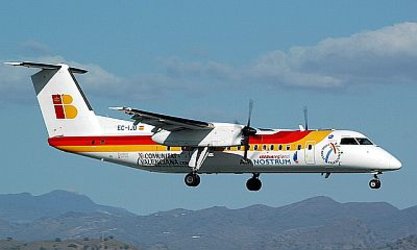Safer air traffic with EGNOS
Vertical guidance by means of signals from the sky: this is what EGNOS, the first European satellite navigation service, will offer pilots during approach and landing.
Flight trials are regularly conducted to demonstrate the new possibilities offered by the European Geostationary Navigation Overlay Service (EGNOS), which has been launched by ESA, the European Commission and Eurocontrol.
A few weeks ago, the Direction Générale de l'Aviation Civile (DGAC – French Civil Aviation Authority) test plane was specially equipped to make tests using EGNOS. At Limoges airport the ATR42 made a number of approaches and landings using the new procedures, in each case aligning itself with the runway's axis and then following a descent path to touchdown.
Inside the plane, normally used for calibration of airport systems in France, the method of analysing the quality of the EGNOS signals was by comparing the landing phases guided by satellite with landings using traditional means such as the Instrument Landing System (ILS).

The results of Limoges trials show again that EGNOS signals allow approaches and landings that meet the safety standards that govern international air traffic.
One of the main advantages of EGNOS in this application is that it is available everywhere without the need for ground infrastructure and it provides vertical guidance procedures for every runway. Furthermore, the cockpit data display is the same as for ILS, so there are no familiarisation problems for the pilots and no additional training costs.
Currently in pre-operational service, EGNOS will be certified in 2008 for safety-of-life applications such as air traffic control.
This system for improving GPS performance will provide a precision of better than two metres, compared to 15 to 20 metres for GPS alone. In addition, there is a guarantee as to the quality of the signals: if a problem is detected, an alarm will be sent to the pilot.

Systems that are equivalent to EGNOS have been set up in the United States, Japan and India, and these systems are compatible and interoperable. An aircraft with a suitable receiver could operate in any area of these areas – it would always have satellite navigation support available, without changing equipment.
For Europe, EGNOS is also the first step in satellite navigation, paving the way for Galileo, which will be the first civil global system.
For European Civil Aviation Authorities, the long term plan is to combine all the existing navigation systems to ensure greater assistance for pilots and the best possible safety of air traffic in Europe and worldwide.















 Germany
Germany
 Austria
Austria
 Belgium
Belgium
 Denmark
Denmark
 Spain
Spain
 Estonia
Estonia
 Finland
Finland
 France
France
 Greece
Greece
 Hungary
Hungary
 Ireland
Ireland
 Italy
Italy
 Luxembourg
Luxembourg
 Norway
Norway
 The Netherlands
The Netherlands
 Poland
Poland
 Portugal
Portugal
 Czechia
Czechia
 Romania
Romania
 United Kingdom
United Kingdom
 Slovenia
Slovenia
 Sweden
Sweden
 Switzerland
Switzerland































